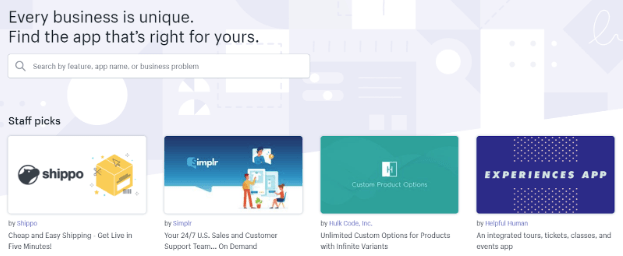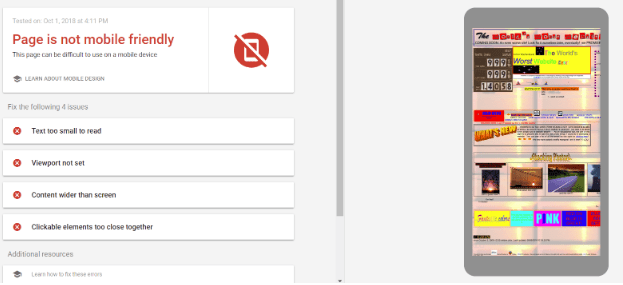6 Ground Rules to Remember When Starting an E-commerce Business
Building a successful e-commerce business can be tough, but it’s definitely possible if you know what to do.

Building a successful e-commerce business is a daunting challenge.
Sure, it may be easier now than ever to get your digital storefront up and running — thanks to the myriad of e-commerce platforms and drag-and-drop website builders out there.
But due to the ever-increasing competition, you need to build upon only the absolute best components for your online goals. You can’t afford to have even one aspect of your e-commerce business to be subpar.
That’s why we put together this post to help you build your e-commerce business on the right foundations.
Without further ado, here are six important ground rules you ought to remember.
Get the Best Updates on SaaS, Tech, and AI
1. Find Reputable Suppliers
Your success in the e-commerce industry depends on reliable suppliers that can provide you and your customers quality goods.
It may be tempting to go for products that offer the best margins, but they may end up costing you more if you overlook all the other factors, such as delivery times, customer service, and overall reliability.
If you need to choose a dropshipping supplier, you need to be extra cautious since they’ll also handle the packaging, inventory, fulfillment, and returns.
You can begin your supplier search in popular online directories that aggregate supplier details and product information into one portal. Their main benefits include convenient product categories, supplier verification, and built-in reviews system to help you evaluate a supplier’s trustworthiness.
Some e-commerce platforms like Shopify also supports apps that allow you to connect with suppliers and seamlessly integrate dropshipped products into your business.

2. Choose the Right E-Commerce Platform
Speaking of e-commerce platforms, remember that there’s no one-size-fits-all solution that can match the needs of every business.
One of the fundamental practices in e-commerce you need to learn is to choose the platform that perfectly suits your individual needs.
Ask yourself, do you plan to build an online store yourself and need ease of use? Are you backed by a team of web developers and prefer a solution designed for large enterprises?
A simple Google search can go a long way when it comes to choosing the right platform for your e-commerce business. Just be sure to consider the following factors in your research:
- Costs
Some platforms can be used free of charge in conjunction with a content management system or site builder. Others, however, require a huge investment in exchange for web development, platform extensions, and so on.
- Scalability
As a new e-commerce business, you need a platform that can keep up with your company’s growth — not restrict it. Always take a look at an e-commerce platform’s scalability, which often involves the use of add-ons and backend flexibility.
- Required Skills
Lastly, a lot of e-commerce platforms use drag-and-drop page builders that anyone can use. More technical platforms, on the other hand, require extensive knowledge with coding languages like PHP and Ruby on Rails.
3. Target Buyer Keywords
A good-looking online store alone won’t be enough to secure your profits.
To draw in potential customers to your website, you need an online marketing strategy that consists of inbound and outbound methods — from SEO to PPC advertising.
Regardless of your approach, the effectiveness of your marketing relies on a set of target keywords that will help your brand be discoverable to your ideal audience. More specifically, long-tail keywords that people use with commercial intent, such as phrases with terms like “buy,” “price,” or “for sale.”
A tool like LongTailPro can help you scoop up these keywords from a large pool of long-tail keywords. Simply enter a seed keyword to initiate your search and use the “Filter” option to quickly comb through the results.

4. Go Visual
In online stores, high-resolution photos are just as important as compelling product descriptions.
Not only do they help capture the attention of your potential customers, but they also make your product pages more shareable on social media.
You may not know it yet, but images can also be used to improve your search engine rankings. This is particularly effective if you invest in a blog section, which can be leveraged to build your brand and generate recurring traffic to your website.
Aside from product photos, other forms of visual content you can use are data visualizations and videos.
Infographics are among the most accessible visual content types. You just need the right data and a tool like Canva or Piktochart to whip up something aesthetically appealing.
5. Outsource to Fill Skill Gaps
Although being a solo, e-commerce grease monkey is more than doable with today’s tools, you can’t hope to compete unless you seek additional manpower.
Website development, design, copywriting, SEO — there are many areas of e-commerce that are best handled by professionals.
Fortunately, the booming freelancing industry made it easier for solopreneurs and small businesses to get the talent they need. Freelancers also offer their services at competitive rates, which is why they are often more cost-effective than in-house teams.
Below are a few tips that will help you outsource the right people for your e-commerce business:
- Look for candidates with previous experience n the e-commerce industry
- Always ask for work samples before you take their word
- While not required, prefer freelance copywriters who are native English speakers
- Ask about the tools they use
6. Don’t Forget the Mobile Experience
Finally, it’s no secret that the online world is transitioning towards mobile devices.
A study by Forrester also projects that, in 2018, smartphones are involved in over a third of all U.S. retail sales. During the same year, Google also rolled out mobile-first indexing, which means their search engine crawlers will begin assessing a website’s mobile version first before the desktop version.
With all that being said, it’s clear that e-commerce businesses could no longer forego mobile optimization and instead make it a priority.
To figure out the steps you need to take in order to improve the mobile experience of your users, a great place to start would be the Google Mobile-Friendly Test. Upon entering your website’s URL, the tool will automatically generate a list of optimization suggestions that you can follow from top to bottom.

Conclusion
Building a successful e-commerce business can be tough, but it’s definitely possible if you know what to do.
Remember, every decision you make early on can have a lasting impact on your online store’s performance down the line. Just follow the ground rules above and your efforts will surely yield tangible results in time.
FTC Disclosure: The pages you visit may have external affiliate links that may result in me getting a commission if you decide to buy the mentioned product. It gives a little encouragement to a smaller content creator like myself.


